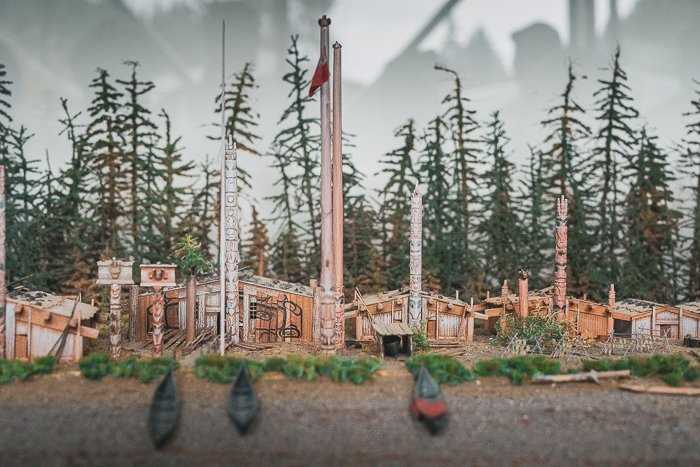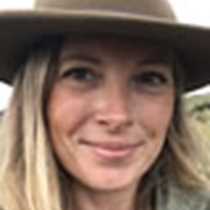Today we celebrated living history with our entry into the beautiful Haida Gwaii region of British Columbia. National Geographic Sea Lion explorers were welcomed in with a guided tour of the Haida Heritage Center’s museum and totem poles.
Two young women working as watchmen, caretakers of the land and traditions, spoke to us in their native language and told us of the efforts to preserve those languages. When smallpox decimated Haida populations taking them from over 10,000 to 600 people, and residential education programs removed children from homes and the government banned many traditions, much language was lost. Now many of the youth are learning their languages again, and a small group of elders is working hard to preserve their oral history.
Our guide on the pole tour was a young woman named Kena Russ. Her Haida name is Xangii Haanas, which means “Beautiful Eyes.” She told me she first became a watchman when she was five years old. Her parents were watchmen for 11 years on Tanu. She used to clear the trails and take care of the moss-covered totem poles that bordered them when she was little. This is her second summer doing tours at the museum.
The other half of our visit involved a tour through the museum, where we learned about Haida history and the significance of art, weavings and other artifacts so important to Haida culture and life. In recent years, many Haida artifacts have been resurfacing that were taken from the Haida people. The museum is part of an extensive effort to return those artifacts to their rightful home.
In the afternoon, we stretched our legs a little with hikes around Spirit Lake. The forest there is every shade of green, with Sitka spruce and hemlock and red alder covered in moss, and lichen and mushrooms growing every which way. What was noticeable, though, was the change in the understory. Invasive deer have overpopulated the island and are wreaking havoc from over-foraging on the ground vegetation. On our hike we passed a fenced off area meant to keep deer out of a stretch of forest called an exclosure. Researchers can use this patch of land to study how the forest could recover, and compare it with the impacts of the heavily grazed forest.
I led the photo group, and we ended our hike with one of my favorite activities. Upon reaching the lake, we all chose a spot and simply stood in silence for several minutes. Without the sounds of our walking and talking, it’s incredible what begins to emerge. A pair of kingfishers rewarded us with our patience by landing with their raucous call on trees right in front of us. We watched them for a while and took a few photos before we departed for the day.







